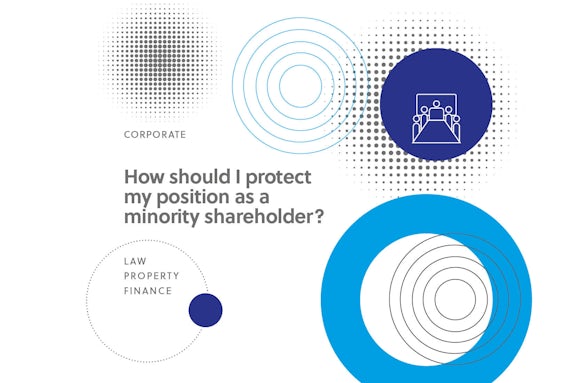Company law distinguishes between the people who manage its business, the directors, and those who own it, its shareholders. In the vast majority of small and medium businesses, the two overlap. It can be made more complicated when a company has a number of shareholders, some of whom may not have an active role in the running of the business. When everything is working well, the finer points of these relationships are often overlooked, but what happens when there are a few bumps in the road?
Take, for example, a fictional family business: X Limited. The company’s ownership comprises 100 shares. W, the founder, owns 51 shares. Her children, Y and Z, own 18 and 31 shares respectively, making them each a minority shareholder. To make it even more interesting, W and Y (but not Z) are directors of the company.
Company law provides a standard set of rules (called the articles of association) which govern how a company is run. These can be adapted in a number of ways to ensure that the company operates to suit your business needs (more on this later).
W, the majority shareholder, can have an input into how the affairs of the business are managed without needing the approval of Y and Z. In line with the basic rules, she could, for example:
- appoint and dismiss Y as a director;
- authorise the directors to allot further shares in the company;
- declare dividends payable to the shareholders; or
- control any borrowing powers the company has.
But are Y and Z completely powerless? Well, it depends.
Some shareholder acts require what is called a special resolution. Requiring approval from the holders of 75% of the share capital of the company. A special resolution is required in order to:
- amend the articles of association (forming part of the company’s constitution);
- change the company’s name; or
- reduce the company’s share capital.
Looking specifically at X Limited, if a special resolution is proposed, Z would be able to block it, as she holds more than 25% of the share capital, but Y is powerless.
All of this represents an illustration of the ‘majority rule’ nature of company law. But notwithstanding this, there are some circumstances in which the minority is protected by the law and can be protected contractually.
Over the course of a few blogs, I am going to explore these in turn. I will start with the duties directors and shareholders have toward one another. Then, I will look at the processes where the court can step in and assist: known as a derivative actions, unfair prejudice orders and the courts ultimate power, the just and equitable winding up of the company. My final blog will look at some of the contractual protections shareholders can use, chiefly through the drafting of a shareholders’ agreement. Throughout these blogs I will use X Limited as an example.
For more information on the above please contact Oliver Craig, Trainee Solicitor, email OCraig@gilsongray.co.uk / +44 (0)141 286 2017 or Craig Darling, Partner – Corporate Law, email cdarling@gilsongray.co.uk/ +44 (0)141 530 2044







